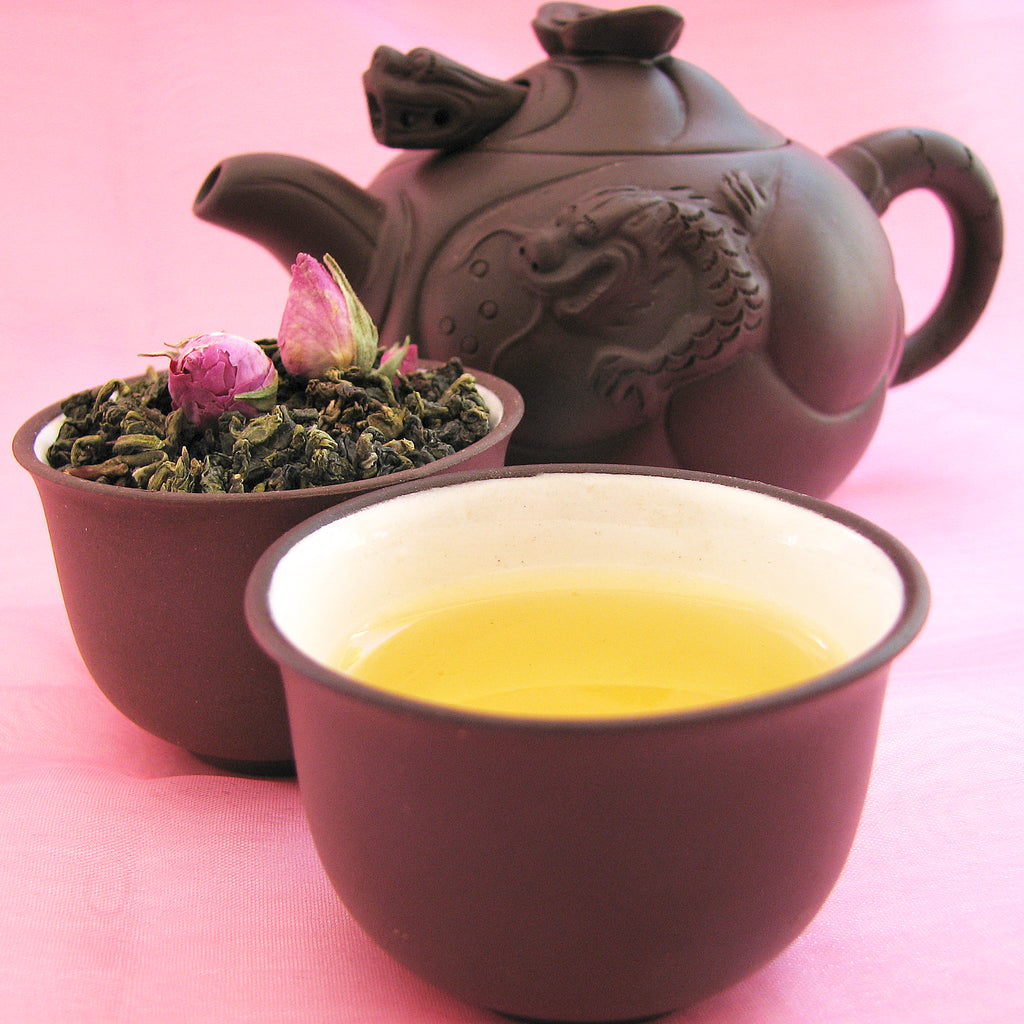Complete Guide to Oolong Tea: Taste, Origins, and Types
Posted by JESSIE X

Imagine sipping on a cup of tea that tantalises your taste buds with a symphony of flavours, offering the perfect balance between green tea's freshness and black tea's robustness. If this sounds like a delightful experience, let us introduce you to the world of oolong tea.
In this complete guide, we'll uncover the secrets of oolong tea, from its origins and taste to its caffeine content and its role in weight loss.
So, grab a cup of your favourite brew, and let's embark on this flavourful journey.
What is Oolong Tea?
Before we dive into the captivating world of oolong tea, let's start with the basics. Oolong tea, often referred to as a "traditional Chinese tea," is made from the leaves of the Camellia Sinensis plant, the same plant used for both green and black teas.
What sets oolong tea apart is the meticulous craftsmanship and unique processing that creates its distinct flavour profile. Oolong tea is often called the "in-between" tea. This very plant gives birth to various tea types, including green and black tea.
The magic happens during oxidation – the chemical reaction responsible for different teas' colour and flavour profiles.
The Three Theories of Oolong Tea's Discovery
When consuming oolong tea, one must navigate through a tapestry of legends and history, with three predominant theories shedding light on its origin.
Tribute Tea Theory: Imagine when tea was offered as a tribute to emperors. Known as the "Dragon-Phoenix Cake" tea, the story of oolong tea begins here. This tea had two distinctive types: "Dragon" (Long) and "Phoenix" (Fong). As the loose tea gained popularity, it became known as Black Dragon tea, more commonly recognised today as oolong tea. The name perfectly encapsulates the dark, curly leaves that result from its unique processing.
Anxi Theory: An accidental discovery often yields the most extraordinary results. In the Fujian province's Anxi region, a man named Wuliang, Wulong, or Sulong stumbled upon oolong's magic. While harvesting tea leaves, he got distracted, allowing the leaves to oxidise unintentionally. Upon his return, he found the leaves already in the oxidation process. This serendipitous event marked the beginning of oolong tea as we know it.
Wuyi Theory: Nestled in the rich history of the Wuyi mountain region, oolong tea's name finds its roots. Poems like "Tea Tale" and "Wuyi Tea Song" from the Qing Dynasty lend credence to this theory. During this dynasty, oolong teas soared in popularity, capturing the heart of Emperor Qian Lung. The captivating beauty of Ti Kuan Yin, the Iron Goddess of Mercy, a specific type of oolong tea, played a pivotal role in this ascent.
Oolong Tea Processing
Green teas retain their vibrant colour and mild flavour because it's crafted from fresh tea leaves that undergo minimal oxidation. On the other hand, black tea's robustness comes from fully crushed leaves that experience enhanced oxidation. Oolong Tea leaves can wilt in the sun and are gently bruised to create partial oxidation.
This careful balancing act between green and black tea processes gives oolong tea its distinctive character. It's like finding the sweet spot between the freshness of a spring morning and the richness of a cosy evening.
The Taste of Oolong Tea
Now, let's dive into the heart of the matter: What does Oolong tea taste like? Picture this, a floral and fruity sip with subtle earthy undertones. Oolong tea is renowned for its complex flavour profile, often described as a dance between sweet and slightly bitter notes. The specific taste can vary depending on the type of Oolong tea leaves and its origin.
Some Oolong teas offer a creamy, almost milky texture, which brings us to a beloved variety known as "Milk Oolong." This unique tea isn't infused with milk but naturally has a delicate milky aroma and taste, making it a favourite among enthusiasts.
Oolong Tea Caffeine Content
One burning question many tea enthusiasts have is, "Does oolong tea have caffeine?" The answer is yes, it does, but in moderation. A typical cup of brewed oolong tea contains approximately 38 mg of caffeine, falling between the caffeine levels in green and black tea.
To put it into perspective, a cup of green tea contains about 29 mg of caffeine. So, oolong tea falls in a wise choice if you're looking for a tea that offers a mild caffeine boost without going overboard.
Exploring Oolong Tea Types
There are several different types of oolong tea, each with unique characteristics and flavours. Here are the five most famous types that have captured the hearts of tea enthusiasts around the world:
1. Phoenix Tea (Dan Cong)
Phoenix oolong tea is a true gem produced in the Guangdong Province in southern China. As the name suggests, this type of oolong tea hails from the Phoenix Mountains in Guangdong. What makes Phoenix oolong tea stand out is its natural flavours and aroma. It's full-bodied, rich, and fragrant, making it a delightful choice for those seeking an authentic oolong experience.
2. Iron Goddess of Mercy (Tie Guan Yin)
Iron Goddess of Mercy (Tie Guan Yin) is an excellent choice if you're unsure where to start your oolong tea journey. This oolong tea is cultivated in the mountainous region of Fujian Province, China. The "Iron" in its name comes from the laborious processing method, which involves up to 60 hours of slow roasting. Iron Goddess of Mercy oolong tea boasts a floral, light, and airy taste, often compared to the delicate fragrance of an orchid.
3. Wuyi Oolong Tea (Da Hong Pao)
In contrast to the "light" oolong teas, Wuyi oolong tea is known for its deep and smoky flavour, earning it the "dark" tea title. This tea's intense taste results from its high oxidation level and mineral components. It's considered one of the world's most expensive teas, so be prepared to invest in a truly remarkable drinking oolong tea experience.
4. High Mountain Oolong Tea (Gaoshan)
Oolong tea from the mountains of central Taiwan is known as High Mountain tea. This oolong tea is generally lightly oxidised, bringing it closer to green tea than black tea. The gentle processing method imparts a light, crisp, and floral taste to the tea, making it a refreshing choice for those who prefer milder flavours.
5. Milk Oolong Tea (Jin Xuan Tea)
Can tea be creamy? Yes, it can! Milk oolong tea answers those seeking a creamy and sweet tea experience. Grown at lower altitudes and harvested in spring, this oolong tea naturally has a milky, creamy, buttery flavour. It's perfect for those wanting to savour a unique and delightful oolong tea experience without any milk.
Conclusion
Is Oolong Tea Good for You? In a word, yes! Oolong tea combines the best of green and black teas, offering a unique flavour profile and potential health benefits. Its moderate caffeine content makes it a great choice for those seeking a refreshing pick-me-up. Plus, the antioxidants and L-theanine in oolong tea can support your well-being in various ways.
In closing, Oolong tea is not just a beverage; it's an experience. From its intriguing taste to its potential health benefits, oolong has something to offer every tea lover. So, why not embark on your oolong adventure today? Brew a cup, savour the flavours, and let the journey begin. Your taste buds, and perhaps your health, will thank you for it.
SHARE:

AUSTRALIA'S FINEST LOOSE LEAF TEAS
Explore Australia's largest selection of Premium Teas & All-Natural Organic Herbal Blends.


